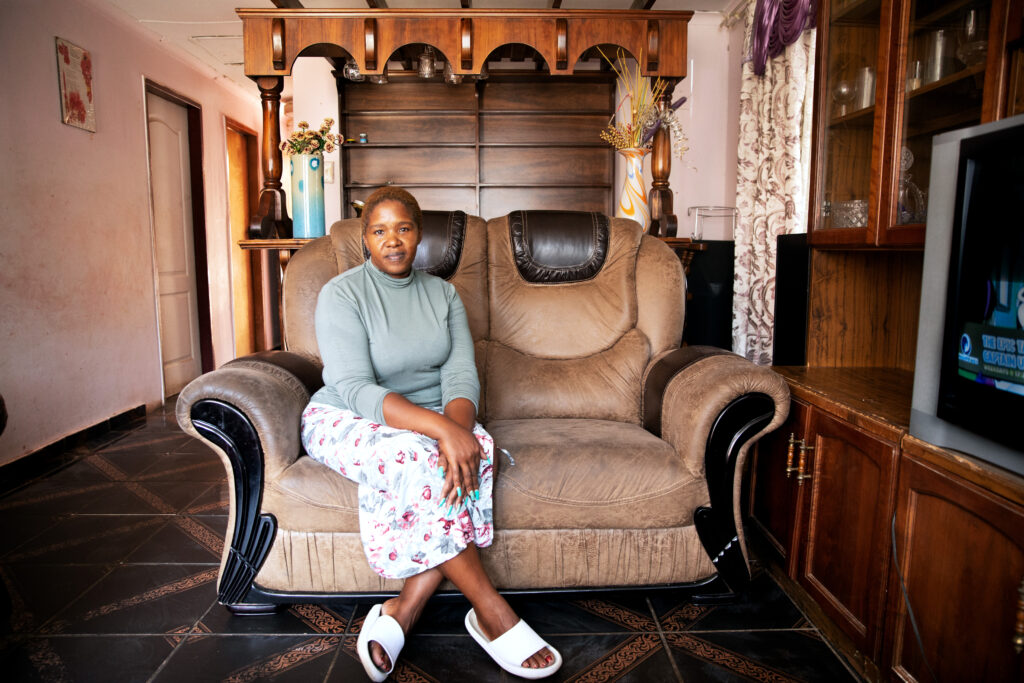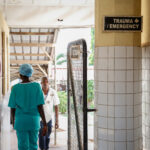- South Africa’s HIV plan aims to have medicines such as methadone, which is a safer fix for people who inject opioids than heroin, available at all government health facilities over the next five years.
- People who inject drugs are a special target group in the country’s plan to cut HIV infections because they’re especially likely to contract HIV if they share needles.
- At the moment, people can only get methadone at some government hospitals if they’re experiencing withdrawal symptoms — and only for up to 10 days. People who want to swap heroin for methadone in the long term need to pay for it themselves or get it from nonprofit health organisations such as TB HIV Care and NACOSA.
- There are five things South Africa needs to do over the next five years to roll out opioid substitution therapy (such as methadone). We break it down.
By 2028, South Africa wants to have medicines such as methadone, which will help people get off opioids like heroin, available at all state clinics. This is part of the country’s new plan for services that can help to cut HIV infections over the next five years, which was released in March.
In 2021, South Africa recorded about 210 000 new HIV infections.
Opioids are a group of drugs that can give you a feeling of extreme pleasure because they prompt your brain to release feel-good chemicals — but they are addictive. Other than the illegal substance heroin, the painkillers morphine and codeine are also part of this group.
People who are hooked on opioids such as heroin often get their fix by injecting it.
Although it’s difficult to get exact numbers (because using drugs like these recreationally is illegal in South Africa), a study among 926 users published in 2019 showed that one in five people who inject drugs have HIV. Why? When drug users share or use discarded needles, there’s a big risk that they can either get infected with HIV or spread the virus.
Enter methadone, which is a substitute for heroin. It is a medicine that’s taken daily as a liquid or a pill to help curb the withdrawal symptoms from the illegal drug.
To your brain, methadone looks like heroin, yet it doesn’t cause as much of a high. So, if you don’t get another dose soon after the high wears off, your body doesn’t experience such bad withdrawal symptoms (for example, vomiting, breathing very fast, stomach cramps and feeling anxious), which is why methadone is used to help people break their heroin dependence. This is called opioid substitution therapy (OST).
Because people swallow their fix rather than inject it, there’s a smaller chance of opioid users sharing needles or using an old one.
Moreover, OST programmes don’t just hand out methadone; they also offer other harm reduction services, such as giving clean needles and syringes to drug users who may still be injecting, so that they won’t have to share.
Studies show that OST can halve the risk of contracting both HIV and the hepatitis C virus (which leads to an infection spread through blood and which damages the liver) and help HIV-positive users to stay on antiretroviral (ARV) treatment because people can often get their HIV medicine at the same place as where they get methadone.
The substitute drug is currently available only at district hospitals for people who are experiencing withdrawal symptoms (because they’ve stopped using altogether) — and then only for only up to ten days.
Andrew Scheibe, a public health specialist at the health organisation, TB HIV Care, told Bhekisisa that they estimate that there are around 400 000 heroin users in South Africa.
This means that getting methadone to help wean people off heroin gradually is not a realistic option if they rely on public healthcare.
With the new plan, though, the aim is to give all opioid drug users who want methadone, the medicine for free at state clinics.
But for a countrywide roll-out to work, the government has to do five things over the next five years, says Scheibe, who also helped to write guidelines for the United Nations Office on Drugs and Crime on putting OST programmes in place.
“A programme like this wouldn’t start everywhere at once; it would have to be a stepwise process.”
Five things over the next five years
1. Get a plan in place
A good start is to have policies that identify people who use drugs as a focus for the public health sector. This has been done by including substance users in the new HIV plan and the National Drug Master Plan.
With this in place, medication can be added to the government’s list of essential treatments (here’s the current list for hospitals and primary healthcare facilities), which names all the medicines that are available in public health facilities, and treatment guidelines can be written up.
Earlier this year, the government started making plans for how a methadone programme could be rolled out for the country and getting input from experts to guide them, says Kgalabi Ngako, deputy director for the mental health and substance abuse directorate at the health department.
2. Find the money
Methadone treatment is costly. To help someone stop using opioids completely, they should ideally be on OST for at least 12 months, starting with a dose of between 10 and 30mg per day. This is then gradually upped to a level where they don’t experience withdrawal symptoms (which is called the maintenance level). At a starting dose of, say, 20mg per day, a single pop could cost about R12.25 (if we take the lowest price at which methadone sells). A month’s supply at this price would therefore work out to almost R400 per user.
For a maintenance level, a dose of at least 60mg per day is advised. A daily fix would then cost just over R36 at the lowest price, and for a month it would work out to about R1 080.
For comparison, it costs the health department around R60 for a month’s supply of the oral HIV prevention pill for one patient (this increases to about R90 when administration costs are included). In the private sector, it costs around R700 for a month’s supply, which works out to R58 per day.
[WATCH] Chasing the dragon – ‘There’s a devil in these drugs’
3. Get enough hands on deck
Methadone is a Schedule 6 medication, which means that only a doctor can prescribe it. But for a full OST programme, a whole team of health workers is needed, including nurses, social workers, pharmacists, counsellors and peer educators. And, says Scheibe, health workers would need training and support on how to prescribe methadone correctly over a treatment course and help people stay with the programme.
4. Set up systems to manage supply
In an OST programme it’s possible that people who get an opioid substitute such as methadone for free might sell it to other people. Hospitals and clinics would therefore have to keep good records of who gets treatment and their progress.
![[WATCH] Busted: Three myths about drug addiction](https://bhekisisa.org/wp-content/uploads/2019/02/c1bb5976-00-bluetooth-the-myth-that-fooled-a-nation.jpeg)
“We already have systems in place [for monitoring how much of a Schedule 6 medicine, like methadone, has been given out], and we just have to strengthen them to make sure that they account for the stock,” Scheibe says. “The risk of diversion exists for every Schedule 6 medication; it’s not different just because it’s methadone.”
5. Have a network of other services too
For OST programmes to work at community health centres, people would need to be able to dispose of needles and syringes safely. Such services are already available for patients who use injectable medicines, for example insulin, says Scheibe.
Offering HIV and hepatitis testing, handing out ARVs and making counselling part of the treatment package can also help to cut HIV infections among people who inject drugs, a study from Canada has shown.
The World Health Organisation also recommends having help on hand for people who have overdosed or are dealing with withdrawal symptoms, which are already available at district hospitals.
Why swop rather than stop
Evidence shows that weaning people off opioids gradually by using substitutes (called maintenance) works better to help them beat the addiction than using these medicines simply to treat withdrawal symptoms after they’ve suddenly stopped using (which is called detoxification).
For example, in a 2017 study, 199 opioid users agreed to be admitted to an abstinence programme at a Cape Town health centre that does not offer substitution therapy. The users were first referred for detoxification before entering the programme if they couldn’t manage their withdrawal symptoms. Only 23 participants completed the two-month treatment.
In contrast, a pilot study in the Western Cape in 2014 showed that two out of three people who got an opioid substitute called buprenorphine (which is similar to methadone) completed a 12-week treatment programme to curb their use of heroin, whereas just under half of the group stuck with the programme when they received only the normal treatment — counselling, group therapy and urine tests — to prevent relapse.
[WATCH] This man’s amazing transformation after he kicked heroin with the help of methadone
Done right, a national roll-out can work
Mauritius is a good example of a country where OST programmes funded mainly by the government work well.
In 2007, this island nation had about 24 000 opioid drug users — one of the highest prevalences in Africa. Data shows that two years before, nine out of 10 Mauritians who were HIV positive injected drugs.
After rolling out the substitution programme to 40 government sites (including healthcare facilities and prisons) in 2014 following a small pilot project, new HIV cases among this group dropped to two in ten by 2020.
“There’s no doubt about the effectiveness of methadone [to treat substance use]. It’s just a question of whether or not our primary healthcare system can feasibly and safely deliver it,” says Scheibe.
Zano Kunene is a health journalist at Bhekisisa.






